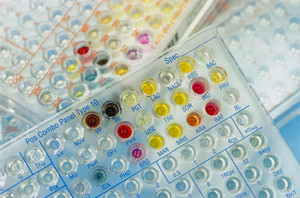The EMA’s comprehensive biosimilar regulatory pathway, which includes the need for new clinical trials and comparability studies that demonstrate quality, efficacy, and safety, should be expanded to include complex biologicals, according to innovation researchers at Utrecht University, Utrecht, The Netherlands [1].
For a biosimilar product to be approved by EMA, it has to be supported by a much wider range of data than a simple generic drug. Generics may be marketed if they can establish therapeutic equivalence to the original drug, i.e. contain an identical active substance, and have comparable pharmacokinetics. Generics do not require additional formal clinical efficacy and safety studies, and this relatively modest requirement is one of the major reasons generics can be marketed far cheaper than their respective innovator drug.
However, complex biologicals, such as glatiramer acetate and iron-sucrose complex, which currently only require generic regulation, have characteristics which more closely match biosimilars, and may be better served following the more stringent biosimilar pathway.
Glatiramer acetate (Copaxone) is used for treating multiple sclerosis. It is a member of the glatiramoid class of products and contains four naturally occurring amino acids: L-glutamic acid, L-alanine, L-lysine and L-tyrosine. This means that glatiramer acetate is not a single molecular entity but rather a heterogeneous polypeptide mixture that contains an exponential number of polypeptides.
Because of its complex structure, the precise mechanisms by which glatiramer acetate exerts its pharmacological effects in individuals with multiple sclerosis are not fully understood, suffice to say that the drug is presumed to be an immunomodulator [2]. To complicate matters further, when it is injected, it is metabolised locally into smaller peptides and/or free amino acids and is often undetectable in serum.
The net effect of these highly complex pharmacokinetics is that any attempts to develop a generic version of this compound have failed, mainly because different manufacturing batches of the drug have produced vastly inconsistent results.
A similar story is seen with the iron-sucrose complex, Venofer, which is used for the IV treatment of iron deficiencies. Recently, several generic copies of Venofer have been introduced, but each of them differs slightly in physical chemical characteristics. Alarmingly, even wider differences are seen with regards to efficacy and safety [3].
Considering the complexity of Copaxone and Venofer, the researchers argue that they should be excluded from EMA’s generics pathway, and instead be subjected to the more stringent biosimilar regulation. Given the evidence so far, it is hard to argue against this.
Related article
EMA comparability studies limiting biosimilar success
References
1. Schellekens H, Moors E. Clinical comparability and European biosimilar regulations. Nature. 2010;28(1):28-31.
2. Blanchette F, Neuhaus O. Glatiramer acetate: evidence for a dual mechanism of action. J Neurol. 2008;255(Suppl 1):26-36.
3. Toblli JE, Cao G, Oliveri L, Angerosa M. Differences between the original iron sucrose complex Venofer® and the iron sucrose similar Generis®, and potential implications. Port J Nephrol Hypert. 2009;23:53-63.








 0
0











Post your comment